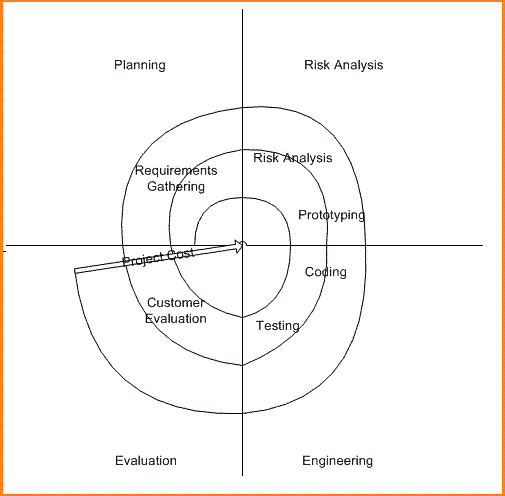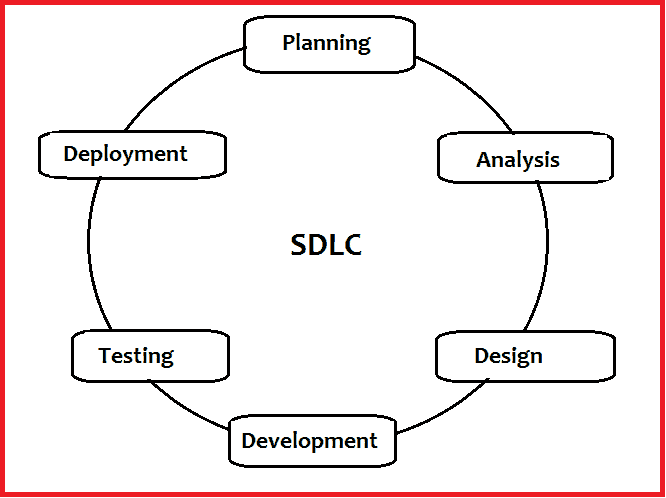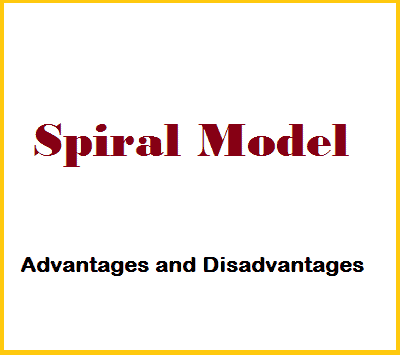Spiral model is a mix of iterative development process model and sequential linear development model i.e. waterfall model with very high accentuation on risk analysis.

Spiral Model Design:
The Spiral model has four stages: Planning, Risk Analysis, Engineering and Evaluation. A software project extend more than once goes through these stages in iterations (called Spirals in this model).
Planning:
Planning stage begins with gathering the business requirements in the benchmark spiral. In the ensuing spirals as the product develops, Identification of system requirements, subsystem requirements and unit requirements are all done in this stage.
BRS – Bussiness Requirement Specifications
SRS – System Requirement specifications
Risk Analysis:
In the Risk Analysis stage, a procedure is attempted to recognize estimating, and monitoring technical feasibility and management risks, such as schedule slippage and cost overrun. A prototype is delivered toward the end of the risk analysis stage. On the off chance that any risk is found amid the risk analysis then substitute arrangements are proposed and actualized.
Engineering Stage:
In this phase software is developed, along with testing at the end of the phase. Hence in this phase the development and testing is done.
Evaluation phase:
This phase allows the customer to evaluate the output of the project to date before the project continues to the next spiral.


